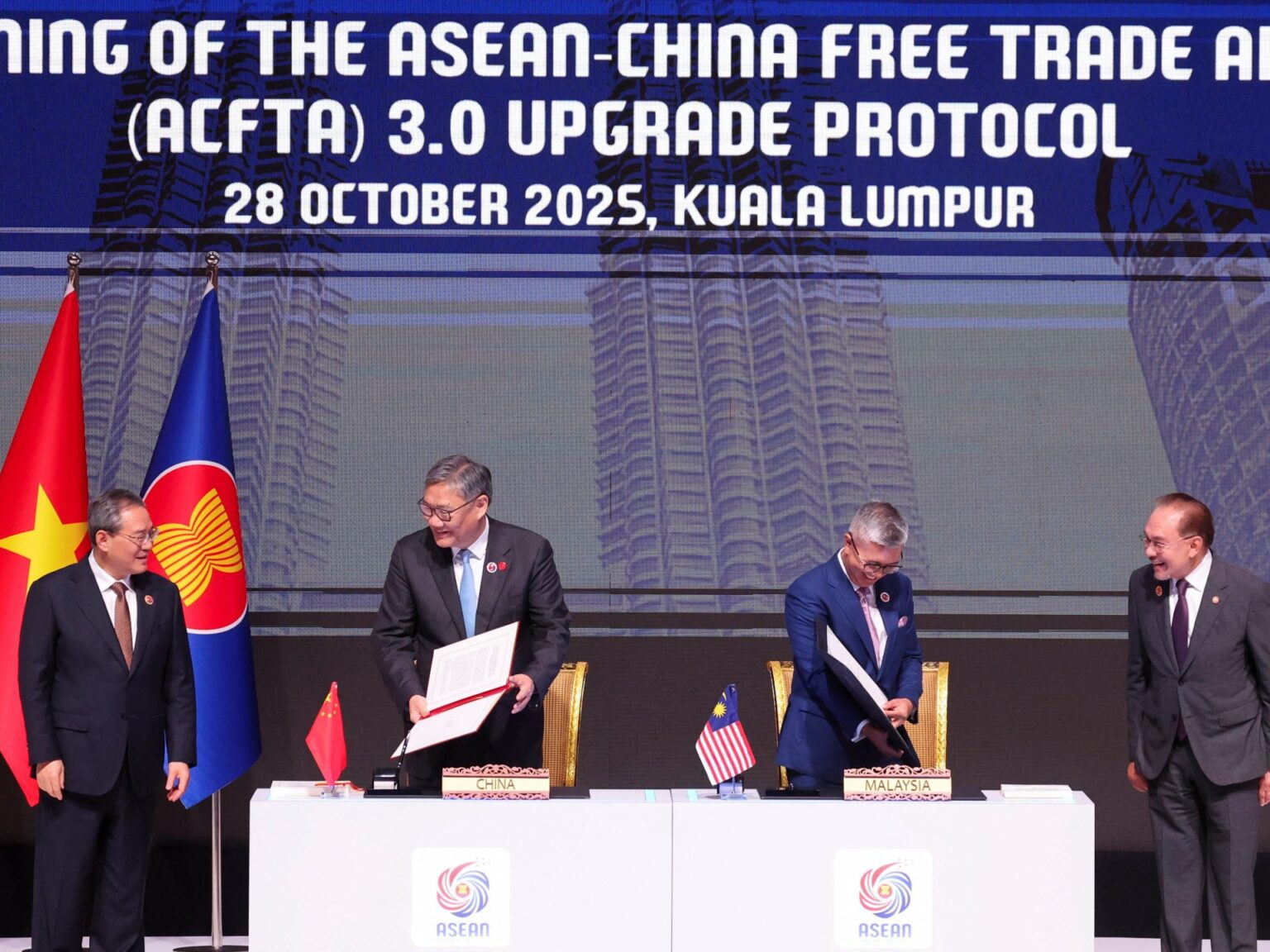China and 11-member regional bloc sign an upgraded version of their free trade pact, as both weather the impact of the US tariffs.
Kuala Lumpur, Malaysia – China and the Association of Southeast Asian Nations (ASEAN) have upgraded their free trade agreement as trade between the two regions continues to rise in the shadow of United States President Donald Trump’s trade war.
The trade pact was signed on the sidelines of the 47th ASEAN Summit in Kuala Lumpur on Tuesday, in a ceremony witnessed by Chinese Premier Li Qiang and Malaysian Prime Minister Anwar Ibrahim.
Recommended Stories
list of 4 itemsend of list
The “3.0 version” of the deal will broaden collaboration on “infrastructure, digital and green transition, trade facilitation and people-to-people exchanges”, according to China’s State Council. It builds on the region’s first free trade pact with China, which came into force in 2010.
The 11-member ASEAN and China have become each other’s largest trade partners in recent years, thanks to the China Plus One supply chain that emerged after Trump’s trade war with China in 2018.
Trade between China and ASEAN has already hit $785bn in the nine months of 2025, up 9.6 percent year-on-year. Much of this trade reflects integrated manufacturing supply chains, but it also increasingly includes finished goods from China that are destined for Southeast Asian consumers.
In his remarks to the ASEAN summit on Tuesday, Li praised China and the bloc’s deepening trade relationship, and spoke of his expectation for “expanded and higher-quality economic cooperation” under the upgraded trade pact.
“Cooperation in various fields has yielded fruitful results, trade volume continues to grow steadily, and ASEAN governments have promoted even closer people-to-people exchanges,” he said.
Zhiwu Chen, a professor of finance at the University of Hong Kong, told Al Jazeera that the “3.0” trade pact comes at a time when China is trying to shore up its relationship with ASEAN.
“This is very important for China, as its trade tensions with the US and EU have been rising, and China needs ASEAN countries. At the same time, this is a time for ASEAN to take advantage of the window of opportunities precisely for the same reason,” he said, describing the deal as a “win-win outcome for both sides”.
In his remarks, Li also took aim at Trump’s tariffs, which have disrupted global trade, and marked the most protectionist policy pursued by the US government since the 1930s.
“Unilateralism and protectionism have seriously disrupted the global economic and trade order. External forces are increasingly interfering in our region, and many countries have been unfairly subjected to high tariffs,” Li said.
The US president also attended the ASEAN summit on Sunday, and is due to meet with Chinese President Xi Jinping in South Korea later this week.
While at ASEAN, Trump signed trade deals with Cambodia and Malaysia, as well as framework agreements with Thailand and Vietnam, highlighting his preference for bilateral trade deals hammered out in one-on-one discussions.
The deals appeared to finalise Trump’s “reciprocal tariff” rate on the four countries, which were set earlier this year at 19 to 20 percent.
Tariffs and trade barriers are also expected to headline Trump’s meeting with Xi, after US Secretary of the Treasury Scott Bessent announced that the two sides had reached a “framework agreement” on tariffs this week.
Earlier this month, Trump had threatened to impose a tariff of 100 percent on Chinese goods by November 1, after China strengthened export controls on rare earth minerals. Bessent said the framework agreement should help both sides “avoid” a tariff hike, according to Reuters.
https://www.aljazeera.com/news/2025/10/28/china-asean-sign-enhanced-free-trade-pact-as-trumps-tariffs-linger?traffic_source=rss


